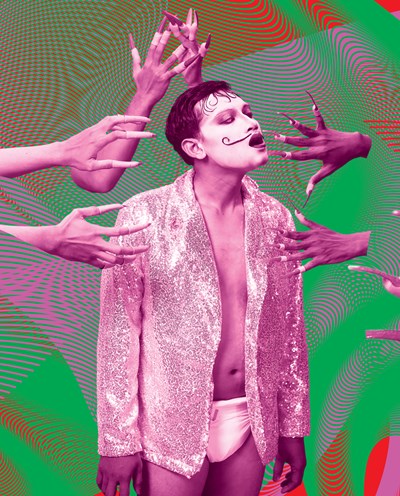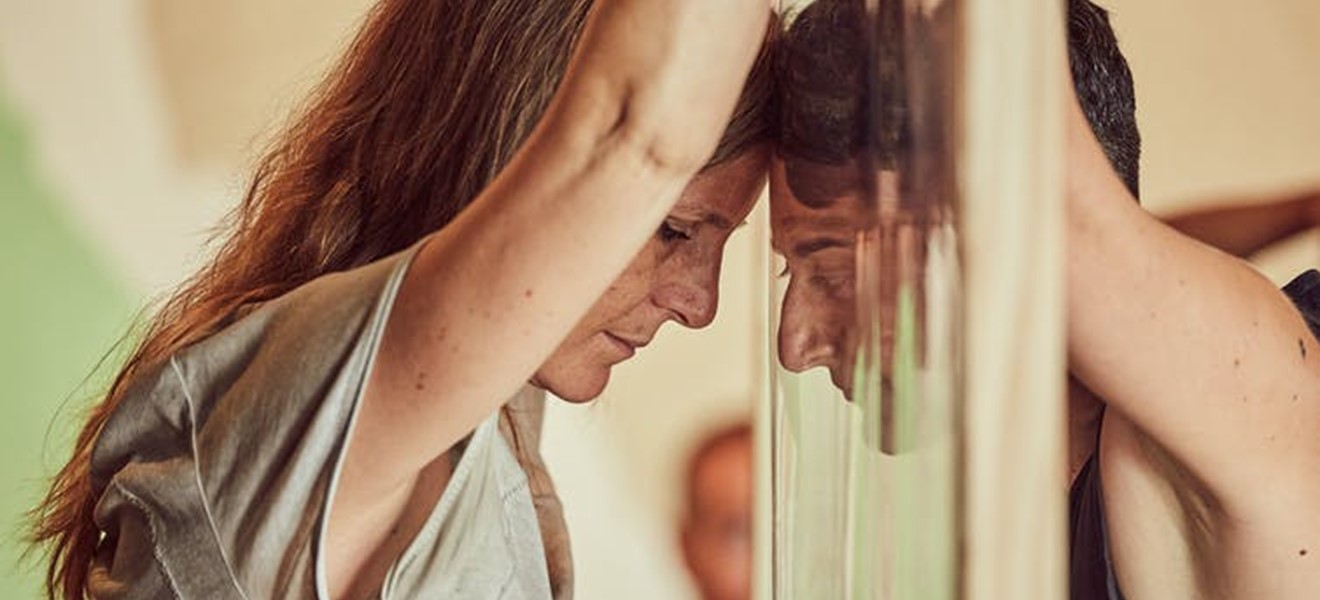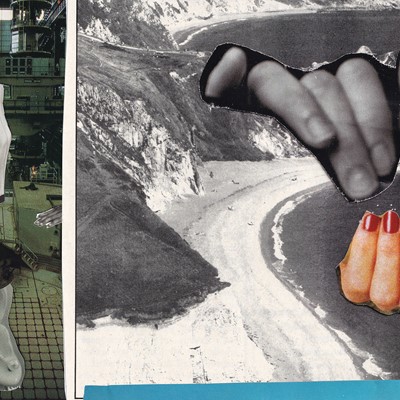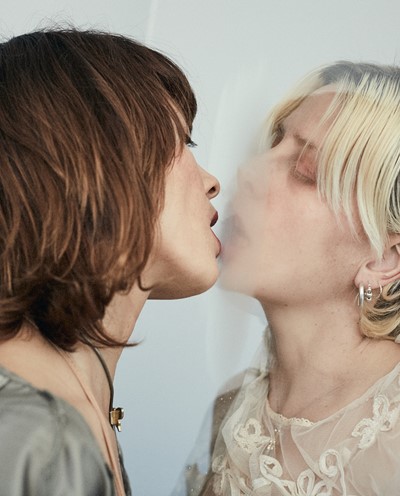
Cherine Fahd: On Touch and Photography

Cherine Fahd is one of many exceptional artists involved in Liveworks Festival of Experimental Art.
We sat down with Cherine to chat about her practice as a photographer, recurring themes in her work, and ideas that inspire her creativity.
People may yearn for touch without consciously realising it. Once you’ve gone so long without touch, you can forget how important it is. How did the participants from A Proxy for A Thousand Eyes react as they rediscovered touch?
The timing of Proxy was key to the performance. As part of the Antidote festival, the performance occurred during the Sydney Opera House's first opening to the public. It was the end of our first year in the pandemic, and participants and non-participants were excited to be in the world again, let alone at the opera house and in a live performance that played with touching in public.
The reactions from the fifty participants, intimates, and strangers, was generous. Each in their way demonstrated an openness to being in the world with others, with me, to touching albeit through the plastic. Most forgot their pandemic woes and were simply nervous about taking part in a performance with an artist. They also noted we were performing under unique social conditions that alienated us from each other’s bodies. A simple gesture of inviting another up to a plastic screen to touch for three minutes was affectively charged owing to social distancing.
Onlookers also commented on the phenomenon of witnessing people act intimately in public. Some thought it erotic and private; others thought it tender and playful in its slowing down of sensations. Many noted how touch is charged as a contraband experience.
Are there other artists exploring the idea of trust and connection in a post-COVID world whose work you’re drawn to? Who should we know about?
My exposure to art in the last 18-months has been minimal. I can’t tell you about art, but I can talk about ideas that support my thinking and making.
There have been a series of talks at the Institute for Cultural Inquiry (ICI) Berlin. Jean Luc Nancy’s Touche-touch is one such lecture. I have long been a reader of Nancy, interested in his writing on the body and the portrait. It was fantastic to wake up at 5 am Sydney time to hear him give a live lecture online. He revisits his ideas on touch amid the pandemic, continuing to explore concepts of community and being-with-others as central to existence; ontologically, existence is always co-existence, according to Nancy. His philosophical project is part of a series of talks at ICI that take queer theory as the starting point to explore intimacy in the pandemic. There are also many other talks, such as, How to have sex in a pandemic by Tim Dean.
How have you maintained your wellbeing with the loss of physical contact?
I have two children and a partner who are generously affectionate, not to mention our two dogs. We are a small tribe, the six of us. But we long for the affection of our families, our parents especially. I come from a big Lebanese family that lives up to all the expectations of warmth, hospitality, and effusive expressions of love. I took our demonstrativeness, our being-together, for granted. I miss friends and dancing, dinners and the pub, my students in the classroom, the accidental touch of strangers in public, the automatic handshake and kiss on the cheek, shoulders touching on a train, and sweaty bodies at the gym. I miss mostly my innocence in matters of the body.
You’ve recently observed that “the camera has the potential to generate intimacy.” How would you describe the kind of intimacy that the camera creates, as compared to other artistic media?
When a camera is pointed at us, we change. This change is the start of something interesting. As a photographer, I have observed how the camera makes people vulnerable. We feel exposed by it, by the photographer, and we ask the photographer for cues. “What do you want me to do? How should I look? Do I look okay?” These are questions we ask when we have our portrait taken. As the photographer, I have a responsibility to you. I want more than anything to make you comfortable, to ease your discomfort. I want you to feel safe, to trust me. We talk, chit-chat, small talk, reveal, exchange stories, play a bit to arrive at an image we are both happy with. The behind the scenes can be cozy and caring or brutal and exacting depending on what sort of photographer and human you are.
Your work often features you, the photographer, in the photo with your subjects. What are you exploring with these interventions?
By being with my subjects in the photographic instant, I can share their experience of being photographed. Rather than stand behind my camera, I can instead be with them to face it. It’s an act of being-together with the subject, not removed and separate. I’m interested in how we approach each other in an event called photography or portraiture. I want our coming together for the camera to be performative of that coming together.
I also like to take on the appearance of others. I often perform hiding. Standing behind the subject is a playful way of taking on the exterior of another person, metaphorically. I have done this in numerous works, such as Shadowing Portraits 2014-2016 and then again in Ecdysis 2019-2021.
Your work often involves a number of participants who perform with and for you…do you find it emotionally draining working with so many people on such intimate topics, in personal settings?
No, I don’t find it emotionally draining, rather thrilling. I’m always amazed that people say “yes” when I ask them to be part of my work. Like when I made the call out on Instagram for Ecdysis, “women wanted with dark hair and dark eyes”, and instantly all these women messaged saying yes!
Working with people, especially the public, gives me purpose as an artist. As I’ve got older, I am less interested in the final art object and drawn instead to the experiences of making art, art as a process of thinking and creating something together with others. I want to generate and share ideas and knowledge across generations. My role as an artist (and an academic) is to share ideas and experiences with others, directly, explicitly, urgently.
Want to hear more? At Liveworks 2021, Cherine Fahd will share an exclusive preview of her new video installation Ecdysis and discuss its themes, origin and process with project curators Daniel Mudie Cunningham (Carriageworks) and Jeff Khan (Performance Space).


